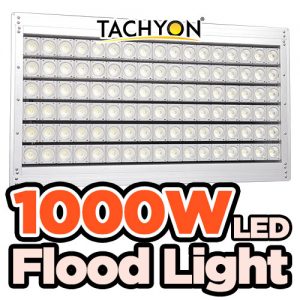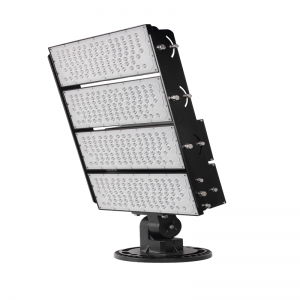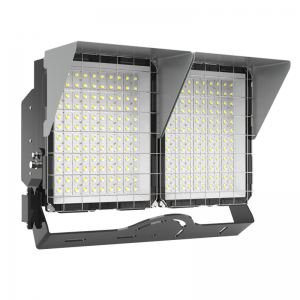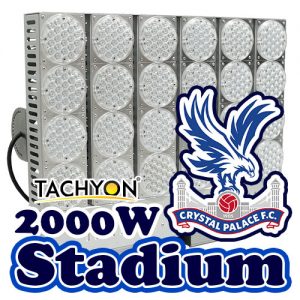(1) Color of LED
The color of the LED is a very important indicator, which must be marked for every LED-related lighting product. At present, the main colors of LED are red, green, blue, cyan, yellow, white, warm white, amber and so on. When we design and produce, this parameter must not be forgotten (especially for beginners). Because the colors are different, the relevant parameters also vary greatly.
(2) LED Current
The forward limit (IF) current of the LED is mostly 20MA, and the light decay current of the LED cannot be greater than IF/3, which is about 15MA and 18MA. The luminous intensity of an LED is proportional to IF only within a certain range. When IF>20MA, the enhancement of brightness cannot be distinguished by naked eyes.
Therefore, the working current of the LED is generally selected around 17-19MA, which is more reasonable. The front is aimed at LEDs between ordinary low-power LEDs (0.04-0.08W). Except for some Piranha LEDs (some are rated around 40MA).
With the continuous development of technology, high-power LEDs are also emerging, such as 0.5W LED (IF=150MA), 1W LED (IF=350MA), 3W LED (IF=750MA), and more specifications. We will not introduce them one by one. You can check the LED manual yourself.
(3) Voltage of LED
Generally speaking, the LED is a forward voltage, which means that the positive pole of the LED is connected to the positive pole of the power supply, and the negative pole is connected to the negative pole of the power supply. Voltage is related to color. The voltages of red, yellow and yellow-green are between 1.8-2.4v. The voltages of white, blue and emerald green are between 3.0-3.6v. What we want to remind here is that the voltage of LEDs produced in the same batch will also have some differences, which should be based on what the manufacturer provides. As the outside temperature increases, VF will decrease.
(4) LED Reverse Voltage VRm
Maximum allowable increase in reverse voltage. If the value is exceeded, the light-emitting diode may be broken down.
(5) Color Temperature of LED
It is expressed by absolute temperature K, that is, a standard black body is heated, and when the temperature rises to a certain level, the color begins to change from dark red-light red-orange-yellow-white-blue gradually. When a light source has the same color as the black body, the absolute temperature of the black body at that time is called the color temperature of the light source.
Because the correlated color temperature is actually an evaluation value of the light color performance of the light source when the black body radiation is close to the light color of the light source, it is not an accurate color contrast. Therefore, two light sources with the same color temperature may still have a slight difference in the appearance of light color. Color temperature alone cannot tell how a light source can render an object’s color, or how well an object’s color is reproduced under that light source.
In addition, the color temperature of the light source is different, and the color of the light is also different:
– The color temperature below 3000k has a warm feeling and achieves a stable atmosphere.
– The color temperature is between 3000k-5000k, which gives people a refreshing feeling.
– The color temperature is above 5000k, giving people a cold feeling.
(6) Luminous Intensity (I, Intensity)
The unit candela, or cd. The luminous flux emitted by a light source per unit solid angle in a given direction is defined as the luminous intensity of the light source in that direction. The luminous intensity is for a point light source, or when the size of the luminous body is relatively small compared to the irradiation distance.
This quantity is indicative of the converging ability of the luminophores to emit in space. The greater the luminous intensity, the brighter the light source appears, and the brighter the object illuminated by the light source under the same conditions. Therefore, the flashlights described earlier use this parameter.
Now LEDs are also described in this unit. For example, if an LED is 15000, the unit is mcd, 1000mcd=1cd, so 15000mcd is 15cd.
The disadvantage of using luminous intensity to express “brightness” is that if two LEDs with identical dies have a good degree of convergence, the luminous intensity will be high. Therefore, users should not only pay attention to the high I value when purchasing LEDs, but also the illumination angle.
Many LEDs with high I value are not achieved by improving their own emission efficiency, but by lengthening the lens and narrowing the illumination angle. Although this is useful for LED flashlights, the viewing angle is also limited. In addition, for the same die LED, the I value of a diameter of 5mm is more than double that of a diameter of 3mm, but only 1/4 of the diameter of 10mm, because the larger the lens, the better the convergence characteristics.
(7) LED Luminous Flux (F, Flux)
The amount of light emitted by a light source per unit time is called the luminous flux of the light source. Similarly, this quantity is for the light source, which describes the total amount of light emitted by the light source, which is equivalent to the optical power. The greater the luminous flux of the light source, the more light is emitted.
For isotropic light (that is, the light from the light source is emitted with the same density in all directions), then F=4πI. That is to say, if the I of the light source is 1cd, the total luminous flux is 4π=12.56 lm. Compared with mechanical units, luminous flux is equivalent to pressure, and luminous intensity is equivalent to pressure.
To make the irradiated point look brighter, we must not only increase the luminous flux, but also increase the means of convergence. In fact, it is to reduce the area, so as to get more strength.
The human eye perceives different colors of light differently. This feeling determines the conversion relationship between luminous flux and optical power. For the most sensitive 555nm yellow-green light, 1W = 683 lm, that is to say, 1W of power is all converted into light with a wavelength of 555nm, which is 683 lumens. This is the maximum light conversion efficiency and is also the calibration value. Because the human eye is most sensitive to light at 555nm.
For other colors of light, such as 650nm red, 1W of light is only equivalent to 73 lumens, because the human eye is not sensitive to red light. For white light, it depends, because many different spectral structures are white. For example, the white light of an LED, the white light of a TV, and sunlight are very different because of the different spectrums.
(8) LED Illuminance (E, Illuminance)
The unit is lx (previously called lux). Its meaning is the illuminance produced by 1 lumen of luminous flux evenly distributed on a surface of 1 square meter.
(9) Color Rendering
The degree to which the light source presents the color of the object itself is called color rendering. That is, the degree of color fidelity.
The color rendering of the light source is indicated by the color rendering index, which represents the deviation of the color of the object under light compared with the color of the reference light (sunlight) illumination, and can more comprehensively reflect the color characteristics of the light source.
Light sources with high color rendering are better for colors, and the colors we see are close to natural colors. Light sources with low color rendering perform poorly on color, and we see large color deviations.
The International Commission on Illumination (CIE) sets the color rendering index of the sun as 100, and the color rendering index of various light sources is different, such as: high pressure sodium lamp color rendering index Ra=23, fluorescent tube color rendering index Ra=60-90.
- There are two types of color rendering:
– Faithful color rendering: A light source with a high color rendering index (Ra) can be used to correctly express the original color of the material. The value is close to 100, and the color rendering is the best.
– Effect color rendering: To vividly emphasize specific colors and express the beauty of life, the additive color method can be used to enhance the color rendering effect.
(10) Glare
Objects with extremely high brightness or strong contrast of brightness in the field of view can cause visual discomfort, which is called glare. Glare is an important factor affecting the quality of lighting.
(11) Service Life of LED
In general, LEDs can be used for more than 50,000 hours, and some manufacturers claim that their LEDs can operate for about 100,000 hours.
The main problem with this is that LEDs do not simply cease to function, and their rated lifespan cannot be calculated using traditional luminaire measures. In fact, when testing the life of an LED, no one will be sitting around waiting for it to stop functioning. However, there are other ways to measure the lifespan of an LED.
LEDs last because they don’t have problems with blown filaments. The LED doesn’t stop functioning outright, but it does gradually degrade over time.
It is predicted that high-quality LEDs can maintain more than 60% of the initial light brightness after 50,000 hours of continuous operation. Assuming the LED has reached its rated lifespan, it may actually still be glowing, just very dimly.
To extend the life of the LED, it is necessary to reduce or completely dissipate the heat generated by the LED chip. Thermal energy is the main reason that affects the operation of LEDs.
(12) LED Lighting Angle
The light-emitting angle of the diode is also its light scattering angle, which is mainly controlled by adding a scattering agent during the production of the diode. There are three categories:
High directivity. Generally, it is a pointed epoxy package, or a package with a metal reflective cavity, and no scattering agent is added. The light-emitting angle is 5°-20° or less, with high directivity. We generally use it as a local illumination light source, or combine it with a light detector to form an automatic detection system.
Standard type. Usually we use it as an indicator light, and its light-emitting angle is 20°-45°.
Scattering type. This is an indicator light with a larger viewing angle, the light-emitting angle is 45°-90° or more, and the amount of scattering agent is larger.





